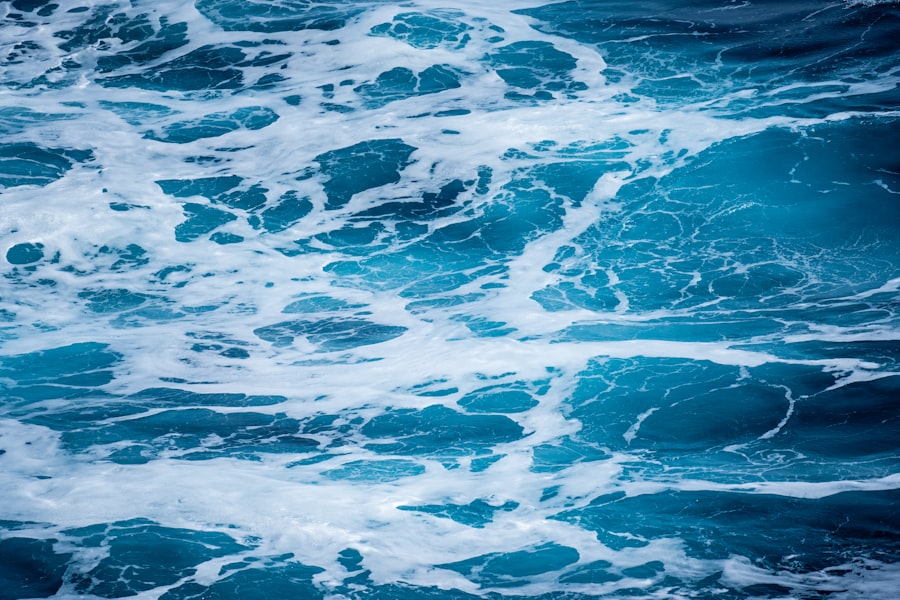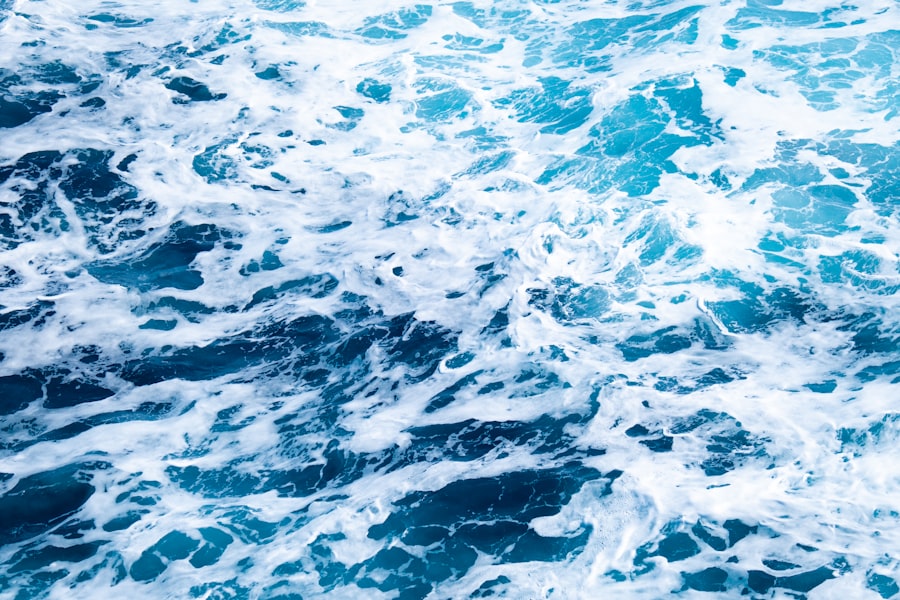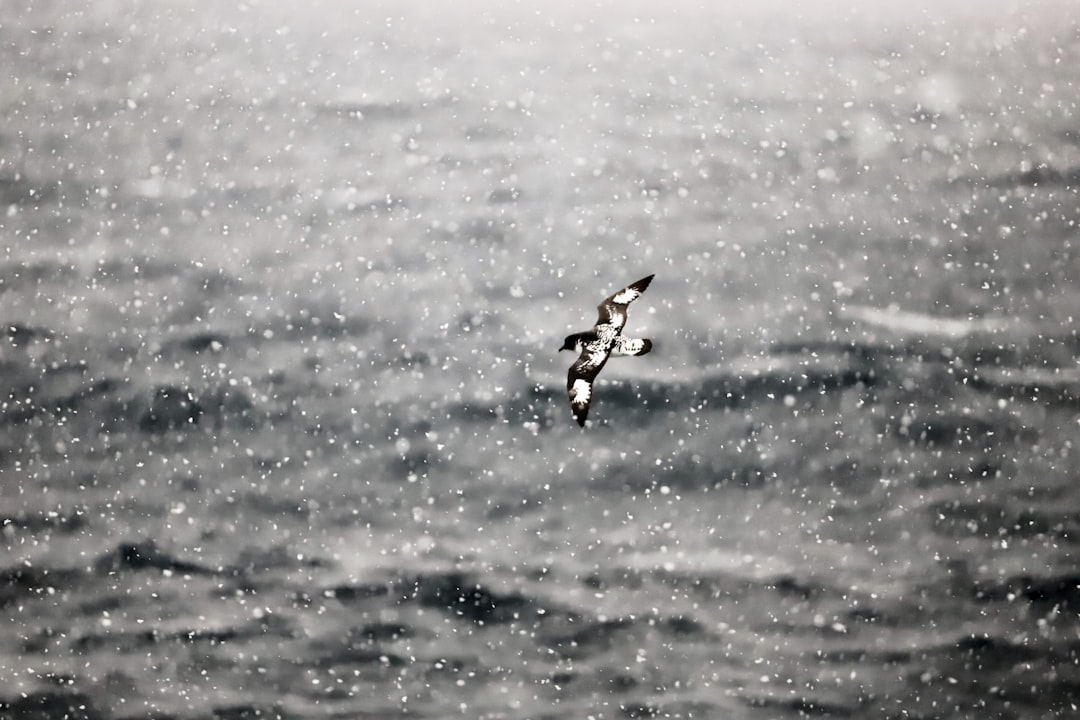The Drake Passage, a body of water that separates South America from Antarctica, is renowned for its tumultuous seas and rich biodiversity. Named after the English explorer Sir Francis Drake, who navigated these waters in the late 16th century, the passage has become a focal point for maritime exploration and scientific research. Its strategic location serves as a critical conduit for ocean currents and weather patterns, making it a significant area of study for climatologists and marine biologists alike.
The Drake Passage is not merely a geographical feature; it embodies the intersection of human curiosity, environmental challenges, and the wonders of nature. As one of the most notorious maritime routes in the world, the Drake Passage has captured the imagination of adventurers and scientists for centuries. Its unpredictable weather and rough seas have earned it a reputation as a formidable challenge for sailors.
However, this very unpredictability contributes to its ecological richness, making it a vital area for marine life. The passage serves as a reminder of the power of nature and the resilience required to navigate its challenges, both literally and metaphorically.
Key Takeaways
- The Drake Passage is a body of water between South America’s Cape Horn and the South Shetland Islands of Antarctica, known for its challenging sailing conditions.
- It serves as a crucial link between the Pacific and Atlantic Oceans, making it an important route for global maritime trade and scientific research expeditions.
- The Drake Passage is characterized by strong winds, rough seas, and rapidly changing weather, making it one of the most unpredictable and challenging maritime crossings in the world.
- The region is home to a diverse range of wildlife, including penguins, seals, and whales, making it a popular destination for wildlife enthusiasts and researchers.
- The passage has a rich history of exploration, with early expeditions by famous explorers such as Sir Francis Drake and Charles Darwin, and continues to be a site for scientific research and environmental conservation efforts.
Geographic Location and Importance
Geographically, the Drake Passage lies between Cape Horn at the southern tip of South America and the Antarctic Peninsula. Stretching approximately 800 kilometers (500 miles) wide, it connects the Atlantic and Pacific Oceans, playing a crucial role in global ocean circulation. This connection facilitates the movement of warm and cold water masses, influencing climate patterns far beyond its immediate vicinity.
The passage is not only significant for its geographical features but also for its role in regulating oceanic currents that affect weather systems across the globe. The importance of the Drake Passage extends beyond its physical characteristics; it serves as a vital route for maritime trade and exploration. Historically, it has been a key passage for ships traveling to and from Antarctica, facilitating scientific research and tourism in the region.
The waters are also rich in resources, including fish stocks that are essential for local economies. As such, understanding the geographic significance of the Drake Passage is crucial for comprehending its broader implications on global trade, climate, and biodiversity.
Climate and Weather Patterns

The climate of the Drake Passage is characterized by its extreme variability, influenced by its position between two major oceanic bodies. The region experiences strong winds, frequent storms, and rapidly changing weather conditions, making it one of the most challenging maritime environments in the world. The passage is often subject to fierce gales and high waves, which can create treacherous conditions for vessels attempting to navigate through it.
This unpredictability is largely due to the confluence of warm waters from the Atlantic Ocean meeting the cold currents from the Southern Ocean. Weather patterns in the Drake Passage are also influenced by larger climatic phenomena such as El Niño and La Niña. These events can lead to significant shifts in temperature and precipitation patterns, affecting not only local weather but also global climate systems.
The passage’s unique climatic conditions make it an area of interest for researchers studying climate change and its impacts on oceanic ecosystems. Understanding these weather patterns is essential for predicting future changes in marine environments and developing strategies for adaptation.
Unique Wildlife and Marine Life
| Category | Number of Species |
|---|---|
| Mammals | 5,416 |
| Birds | 10,425 |
| Reptiles | 10,793 |
| Amphibians | 6,433 |
| Fish | 32,900 |
| Invertebrates | 1,367,555 |
The Drake Passage is home to an astonishing array of wildlife, both above and below the water’s surface. Its nutrient-rich waters support diverse marine life, including krill, which serves as a fundamental food source for many species. The passage is frequented by various species of whales, including humpback, minke, and orca whales, which migrate through these waters in search of food.
Additionally, seabirds such as albatrosses and petrels are commonly seen soaring above the waves, taking advantage of the strong winds that characterize the region. The unique ecosystem of the Drake Passage is not only vital for marine life but also plays a crucial role in global biodiversity. The presence of such diverse species highlights the importance of this region as a breeding ground and feeding area for many animals.
Conservation efforts are increasingly focused on protecting these habitats from overfishing and climate change impacts. The rich biodiversity found in the Drake Passage serves as a reminder of nature’s interconnectedness and the need for sustainable practices to preserve these vital ecosystems.
Historical Significance and Exploration
Historically, the Drake Passage has been a site of exploration and adventure since the age of discovery. Sir Francis Drake’s voyage in 1578 marked one of the first recorded crossings of these treacherous waters, paving the way for future explorers seeking new trade routes and territories. Over the centuries, numerous expeditions have ventured into the passage, contributing to our understanding of geography, navigation, and marine science.
The challenges posed by its unpredictable weather have only added to its allure as a destination for explorers. The historical significance of the Drake Passage extends beyond exploration; it has also played a role in shaping international relations and maritime law. The passage has been a focal point for discussions regarding territorial claims and resource management in Antarctic waters.
As nations continue to explore and exploit these regions, understanding the historical context of human interaction with this environment becomes increasingly important. The legacy of exploration in the Drake Passage serves as a testament to humanity’s enduring quest for knowledge and adventure.
Challenges of Crossing the Drake Passage

Crossing the Drake Passage presents numerous challenges for sailors and researchers alike. The unpredictable weather conditions can lead to sudden storms and high waves, creating hazardous situations for vessels navigating through these waters. Many sailors have recounted harrowing experiences while traversing the passage, with some describing it as one of the most daunting maritime routes in existence.
The combination of strong currents and shifting winds can make navigation particularly difficult, requiring skilled seamanship and careful planning. In addition to natural challenges, there are logistical considerations that complicate crossings. The remoteness of the region means that access to emergency services is limited, making safety precautions paramount for those venturing into these waters.
Furthermore, environmental regulations must be adhered to in order to protect fragile ecosystems from human impact. As interest in Antarctic exploration grows, addressing these challenges becomes increasingly important to ensure safe and responsible navigation through this remarkable yet perilous passage.
Environmental Conservation Efforts
Recognizing the ecological significance of the Drake Passage has led to increased efforts aimed at environmental conservation. Various international agreements and organizations work collaboratively to protect marine ecosystems from overfishing, pollution, and climate change impacts. The establishment of marine protected areas within the passage aims to safeguard critical habitats while promoting sustainable fishing practices that balance economic needs with environmental stewardship.
Conservation initiatives also focus on raising awareness about the importance of preserving biodiversity in this unique region. Educational programs targeting both tourists and local communities emphasize responsible practices that minimize human impact on fragile ecosystems. By fostering a sense of stewardship among those who visit or rely on these waters, conservation efforts seek to ensure that future generations can continue to appreciate the natural wonders of the Drake Passage.
Research and Scientific Discoveries
The Drake Passage serves as a vital site for scientific research, offering insights into oceanography, climate change, and marine biology.
The passage’s dynamic currents play a crucial role in regulating ocean temperatures and salinity levels, making it an ideal location for studying climate-related phenomena.
Recent scientific discoveries in the Drake Passage have shed light on how marine ecosystems respond to changing environmental conditions. Studies on krill populations have revealed their sensitivity to temperature fluctuations, highlighting potential implications for species that rely on them as a food source. Additionally, ongoing research into ocean acidification provides valuable data on how increased carbon dioxide levels affect marine life in this region.
The findings from these studies contribute to a broader understanding of climate change impacts on oceanic ecosystems worldwide.
Tourism and Expedition Opportunities
Tourism in the Drake Passage has grown significantly over recent years, driven by an increasing interest in adventure travel and ecotourism. Expedition cruises offer travelers a chance to experience the breathtaking landscapes and unique wildlife that characterize this remote region. Tour operators provide guided excursions that emphasize responsible tourism practices while allowing visitors to witness firsthand the beauty of Antarctica’s icy shores.
While tourism presents opportunities for economic growth, it also raises concerns about environmental sustainability. Operators are encouraged to adhere to strict guidelines designed to minimize human impact on fragile ecosystems while promoting awareness about conservation efforts among travelers. By fostering an appreciation for this remarkable environment, tourism can play a role in supporting ongoing conservation initiatives while providing unforgettable experiences for those who venture into these captivating waters.
Economic Impact and Trade Routes
The economic impact of the Drake Passage extends beyond tourism; it plays a crucial role in global trade routes as well. Ships transporting goods between South America and other continents often navigate through these waters, making it an essential corridor for international commerce. The passage facilitates trade not only with Antarctica but also with various countries along South America’s coast.
However, reliance on this maritime route comes with challenges related to environmental sustainability and resource management. As shipping traffic increases, concerns about overfishing and pollution have prompted calls for stricter regulations governing maritime activities in the region. Balancing economic interests with environmental protection remains a critical issue as nations seek to navigate both opportunities and challenges presented by this vital waterway.
Future Implications and Climate Change Effects
Looking ahead, the future implications of climate change on the Drake Passage are profound. As global temperatures rise, scientists predict significant shifts in ocean currents and weather patterns that could alter marine ecosystems within this region. Changes in sea ice extent may impact species migration patterns while also affecting nutrient availability for marine life.
Moreover, increased shipping traffic associated with climate change could exacerbate existing environmental challenges faced by this delicate ecosystem. Addressing these potential impacts requires collaborative efforts among nations to develop adaptive strategies that prioritize sustainability while ensuring safe navigation through these waters. As humanity grapples with climate change’s far-reaching consequences, understanding how it affects critical regions like the Drake Passage will be essential for safeguarding both natural resources and future generations’ ability to explore this remarkable part of our planet.
In conclusion, the Drake Passage stands as a testament to nature’s power and beauty while serving as a critical area for scientific research, exploration, conservation efforts, tourism opportunities, economic activity, and climate change implications. Its unique geographic location makes it an essential component of global ocean circulation systems while also presenting challenges that require careful navigation—both literally and figuratively—as humanity continues its quest to understand this remarkable waterway.
The Drake Passage, known as “ड्रेक जलसंधी” in Marathi, is a significant body of water that lies between the southern tip of South America and Antarctica. It is renowned for its challenging navigation conditions and is a crucial passage for marine biodiversity. For those interested in exploring more about geographical wonders and their significance, you can find a related article on the Drake Passage on the MyGeoQuest website. This resource provides insightful information about various geographical phenomena and their impact on global ecosystems.
WATCH NOW! Drake Passage: Earth’s Deadliest Waters Revealed
FAQs
What is the meaning of Drake Passage in Marathi?
The Drake Passage is a body of water located between the southern tip of South America and the South Shetland Islands of Antarctica. In Marathi, it can be referred to as “ड्रेक पॅसेज”.
Why is the Drake Passage significant?
The Drake Passage is significant because it represents the shortest and most direct route between Antarctica and the rest of the world. It is also known for its notoriously rough seas and challenging sailing conditions.
What is the significance of the Drake Passage in terms of marine life?
The Drake Passage is a critical region for marine life as it serves as a major thoroughfare for the migration of marine species between the Atlantic and Pacific Oceans. It is also home to a diverse range of marine wildlife, including whales, seals, and seabirds.
How does the Drake Passage impact weather and climate?
The Drake Passage plays a significant role in influencing weather patterns and climate in the surrounding regions. Its strong westerly winds and ocean currents have a major impact on the climate of Antarctica and the southern tip of South America.
What are the challenges of navigating the Drake Passage?
Navigating the Drake Passage presents numerous challenges due to its unpredictable weather, strong winds, and rough seas. It is known for its turbulent conditions, making it a daunting passage for sailors and explorers.
